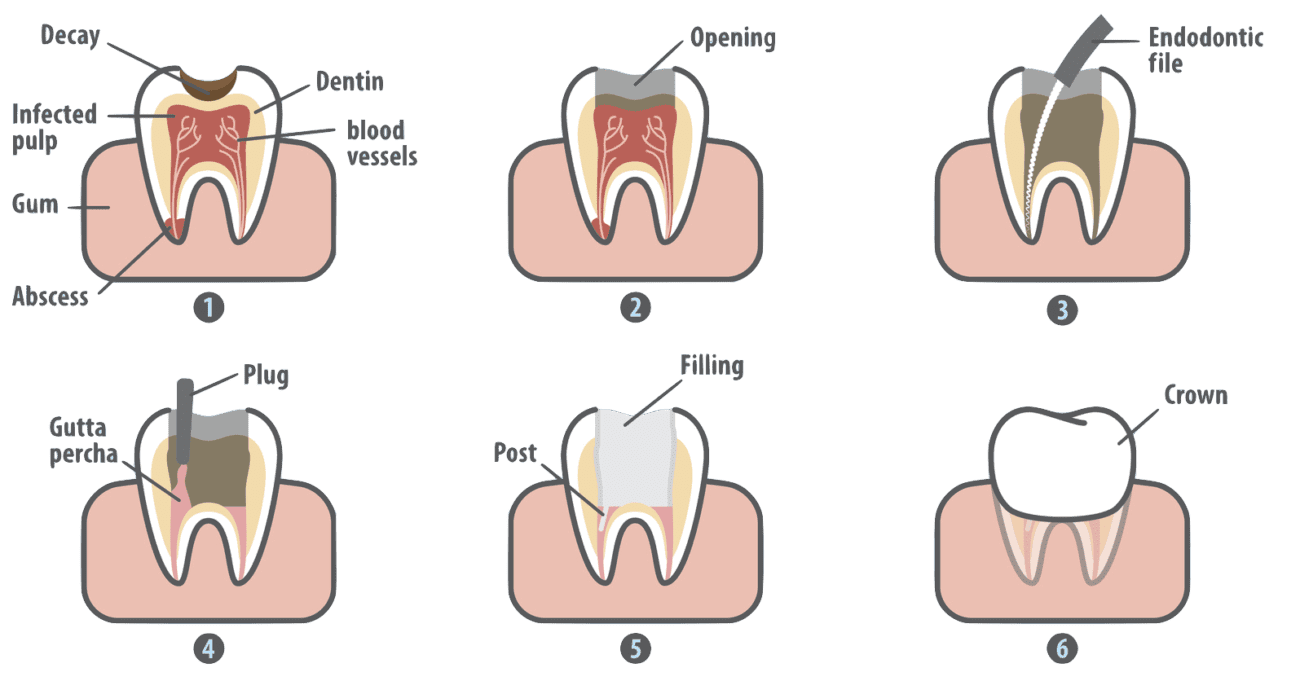People often panic when they hear the term “root canal” mentioned at their dentist’s office. They envision horrifying surgery, extraction of teeth, and constant, unbearable pain during the procedure and healing process. With advances in medical science, root canal therapy is almost as routine as a regular cleaning at a six-month checkup. Many general dentist’s will refer their patient’s to a Board Certified Endodontist that may use a microscope for the procedure.
Steel Bite Pro Review Keep Your Teeth Healthy as well as away from the problems. The occurring of the dental problems is reducing with the correct pills. You can check the pros and cons of the medicine at the online website so that the results are available according to the requirements.

What is a Root Canal?
A tooth that is decayed or infected may need root canal therapy. The procedure involves getting rid of the nerve (sensations) and pulp (blood supply and connective tissue) of the decayed or infected tooth. The inside of the tooth is then completely cleaned of bacteria, and the tooth is sealed to prevent further infection. Once a tooth has erupted, the nerve is not very important, thus it can be removed without causing damage to the tooth. However, with the root removed, the tooth will no longer feel the sensations of hot and cold. This does not affect the functionality of the tooth, but it can take time to grow used to the absence of these sensations. Also, without a blood supply to nourish the tooth, it can be similarly compared to a tree that no longer has its roots to nourish it and becomes brittle and breaks.
What Causes a Tooth’s Nerve and Pulp to Become Damaged?
Infection in a tooth’s nerve and pulp can be caused by decay. Bacteria within the mouth combined with sugars from food, form an acid that eats through the enamel on teeth. Over time, this causes decay and cavities. Cavities allow more bacteria into the tooth, affecting the nerve and pulp, causing infection and decay. Brushing and flossing after every meal is vitally important to help prevent this damage from occurring. Repeated dental procedures on a specific tooth can also lead a tooth’s nerve and pulp becoming damaged.

What Are the Possible Signs That a Root Canal Is Needed?
Possible signs that an individual may need a root canal include:
- Severe pain on a specific tooth when chewing
- Sensitivity or pain to hot or cold temperatures
- Dark spots on the tooth
- Pain or tender areas in the nearby gums
Sometimes, however, there are no symptoms, and the need for root canal therapy may only be detected from x-rays taken during a regularcheckup.
How Painful Is a Root Canal?
While a painful reputation seems to shadow root canal procedures, most people actually find that the whole process is about as painful as having a cavity filled. The area around the tooth may be tender for several days after the procedure, but this sensation gradually dissipates over time. Complaints of pain can stem from an infection forming inside the tooth after root canal treatment. This can happen if the bacteria within the tooth have not been cleaned completely and will require that the tooth is re-treated. Sometimes a dentist will complete the root canal in two phases, removing the root and pulp and cleaning the inside of the tooth first, then moving on to the second phase, in which an antibiotic will be prescribed to ensure that bacteria have been completely killed before sealing the tooth.
If a root canal is determined to be a necessary procedure, the patient really has no cause for worry and trepidation. In most cases a root canal is a relatively quick process that involves only minimal discomfort. Proper oral hygiene, regular dental checkups and cleanings can help to prevent the need for a root canal.